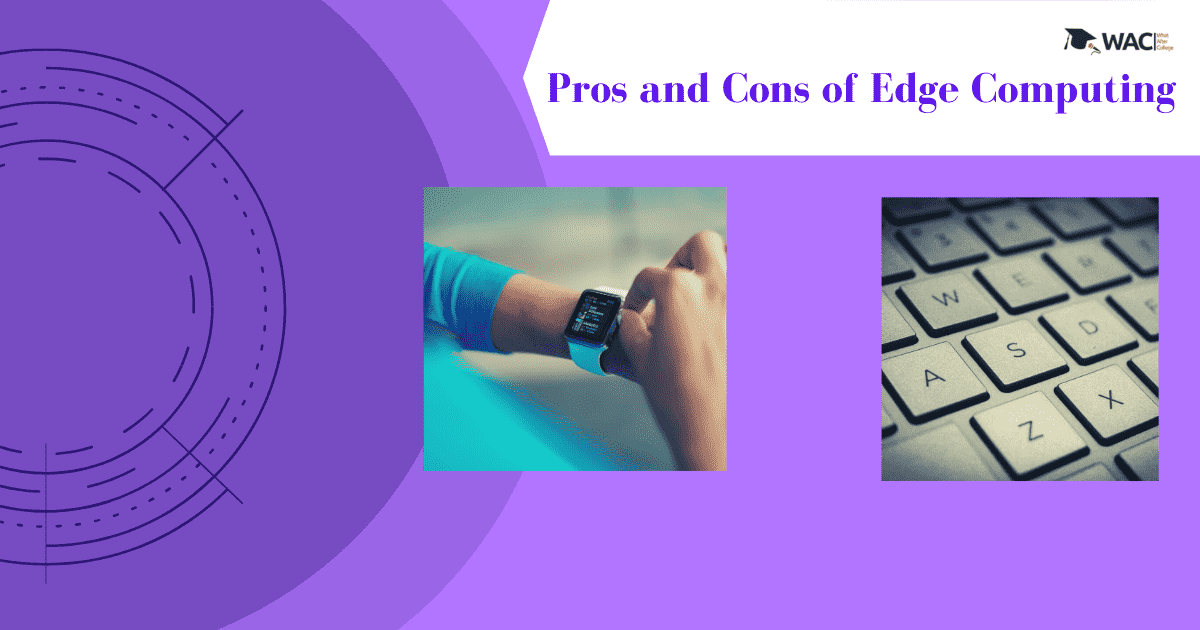Before seeing the pros and cons of Edge Computing you should understand what is edge computing? The technology achieves traction at a certain period and obtains widespread adoption within a short time. It was cloud a few years ago, then IT came, and now edge computing seems to be the buzz phrase.
Firms too are switching from cloud to edge computing. The reason for this is the fundamental requirements of costs, storage, and bandwidth present in cloud computing. There are also some reasons why edge computing can be disadvantageous too.
Many firms confused about how edge computing differentiates from other solutions for data processing. And also how this can be beneficial for their business. By evaluating the pros and cons of edge computing, you can come up with a better conclusion. And also, about whether it would be best for your company.
The pros and cons of Edge Computing, risks & benefits of Edge Computing will be explored in this article. You’ll be aware of the pros and cons of using edge computing at the end of this post.
Pros and Cons of Edge Computing:
Before starting with the pros and cons of Edge Computing you should understand what its objective? The edge computing objective is to identify the cloud ‘s weaknesses. It provides servers that can analyze a large volume of traffic system data, distribution networks. And also smart factories, without creating time loss and reacting with immediate action when a need arises. So, what are the top pros and cons of edge computing? A short summary here.
Pros of Edge Computing
Here’s what makes it efficient edge computing.
Speed
In an organization, every millisecond is vital to their business. This may cost them hundreds of dollars as a result of downtime or delay. Edge computing has the potential of reducing latency to improve bandwidth. By transmitting data closer to the source of data, it significantly reduces the gap it will travel. Through this, the outcome is the delay milliseconds which measured in microseconds. Therefore the overall service has improved in size, price, and responsiveness.
Security
As cybercrime numbers are rapidly increasing, it is no shock that even the most secure databases are insecure. Data stored in the cloud is often susceptible to a hack, thus sacrificing valuable customer data. It allows a device to collect large data. But also, ensures that only relevant and subjective information sent to the cloud.
Improve Reliability
Edge computing handles part of the reliability very well. So most of the time the edge computing doesn’t rely on internet access and servers it provides uninterrupted service. Users should not worry about faults in the network or slow internet links. It can also store and own data locally through the use of microdata centers. Because of this a reliable relation for IoT devices can ensure. So edge computing in remote areas in which there is no credible network connection.
Cons of Edge Computing
Anyway, there are some pros but there are also some cons in edge computing.
Incomplete Data
Only partial sets of information processed and analyzed by edge computing. Only delete the rest of the records. The businesses will end up losing tons of useful information because of this. Thus the organizations must determine before using edge computing what kind of data they are willing to lose.
Investment Cost
It can be expensive and complex to introduce a cutting-edge facility. This is because of their difficulty requiring additional skills and materials. Besides that, the IoT device with edge computing comes the need for more local equipment for them to work. Overall, this can result in more productivity but it represents a substantial investment.
More Storage
Implementation of edge computing poses some problems is you also need system capacity. When storage devices and computing grow in spite of compactness and complexity. When it comes to functionality, you have nothing to think about! But this can become a key factor when you start the growth of an IoT device.
Conclusion
The pros and cons of edge computing are hard to ignore, it’s an evolution of cloud computing. As the technological world continues to grow, IoT will further expand, requiring cutting-edge computing to step in for support.
All you need to know about IoT
| Introduction to IoT | Career Options after IoT |
| IoT in Business Growth | How IoT works? |
| Future of IoT | Benefits of IoT |
| Disadvantages of IoT | Salary After IoT Course |
Learn IoT
| Top 7 IoT University/ Colleges in India | Top 7 Training Institutes of IoT |
| Top 7 Online IoT Training Programs | Top 7 Certification Courses of IoT |
Learn IoT with WAC
Other Skills in Demand
| Artificial Intelligence | Data Science |
| Digital Marketing | Business Analytics |
| Big Data | Internet of Things |
| Python Programming | Robotics & Embedded System |
| Android App Development | Machine Learning |


